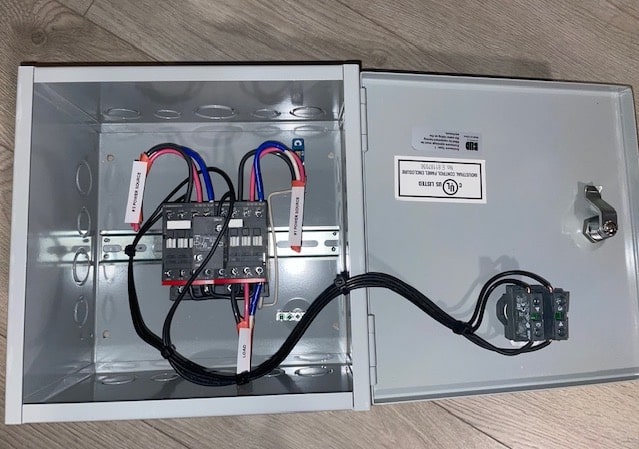
Electrical Control Services in Vancouver
Every day we encounter electrical control systems, although we may not always realize it. These devices tell an operation or machine what to do and when to do it. A simple example is an electrical timer that will turn your lights on and off at specific times. A more complex illustration is a manufacturing plant that includes machinery, air circulation, motion sensors, and controllers.
This type of operation requires input and output devices. An input device gathers information to relay to some form of electrical energy to create an action (output). For instance, when you walk into a darkened room and a sensor recognizes movement and turns the overhead lights on and will turn the lights back off when it no longer detects movement. The input is the sensor, the energy is the power to the lighting fixture, and the output is a light that illuminates your area.
A Series of Interconnected Signals
Complex systems operate through a series of interconnected signals, each with its own input and output. They can be a continuous-time signal where the signals just keep producing all day and night, like a thermometer where you can see the temperature at any time of the day or night. Or they can be a discrete-time signal, which updates at specific times of the day, like looking at the stock market and seeing the value of a share as it has changed.
There are also open and closed-loop systems. An open loop is where there is no feedback. An example might be an oven where you put everything in it and set a time, and then it turns itself off at the designated hour. It will not detect if the food is cooked or burning. Another example is a washing machine. These are simple and reliable, but because you don’t get feedback, may not be what you need in a particular circumstance.
A closed loop is where the system sends back information to the controller so that adjustments are made automatically. It is like the thermostat on your HVAC that will turn the heat (or air conditioning) on or off to maintain a constant temperature in the building. Another example is a toaster that senses when the bread is a desired darkness and stops and ejects the finished product. These are accurate but are more complex to build.
Types of Controllers
Now we are going to discuss types of controllers.
- Manual – Just like it sounds; it takes human intervention for it to do anything.
- Semi-automatic – This takes a person to start the process, and then it can run on its own, like a motor.
- Automatic – This is an operation that monitors itself like the cruise control in your vehicle. It has feedback loops that regulate when to increase the accelerator, etc.
- Local – This is when you must be present at the station to control the device, as opposed to a remote control.
- Remote – This is when you do not need to be physically present but can control a device from another location. These are more and more common and are often termed smart devices. As an example, your child is locked out of your home, and you can use your phone to unlock the door for them. Or you forgot to turn on the slow cooker, so you dial it up and say start.
- On/Off – This is a simple switch that can only be in one position at a time, like a wall light switch.
- Step-by-step – This is when the device can perform in more than one position, but it occurs in steps rather than a continuous process.
When something electrical or electronic malfunctions, it will take a trained professional like those at PR Electric to understand the entirety of the device and how it works and how to properly repair it.